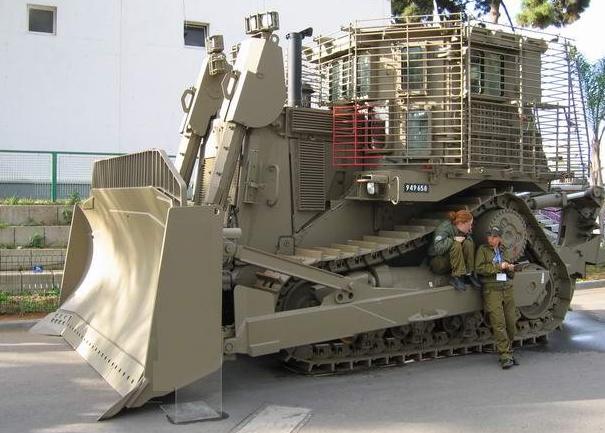60 tons of robotic mayhem. Now that gets the cool stuff vote and I want one. LOL –Matt
——————————————————————

‘Black Thunder’ unmanned dozers to play greater role in IDF
Mar. 30, 2009
Yaakov Katz , THE JERUSALEM POST
The IDF Ground Forces Command plans to double the number of unmanned D9 armored bulldozers in the Engineering Corps arsenal after the vehicle provided exceptional results during Operation Cast Lead in the Gaza Strip in January.
The unmanned version of the D9 bulldozer – called “Black Thunder” – was developed several years ago by the Engineering Corps and was only recently declassified.
“The unmanned D9 performed remarkably during Operation Cast Lead, clearing roads of mines and explosive devices,” explained one officer in the Ground Forces Command. “There was even one vehicle that was damaged, which demonstrates how it did its job since no one was injured.”
The Black Thunder looks like a regular D9 bulldozer but is equipped with a number of cameras that transmit images to the operator, who controls the vehicle with a wireless remote control. The unmanned D9 participated widely in Operation Cast Lead as well as in the Second Lebanon War in 2006.
“The unmanned version is important since if there is a concern that an area is loaded with mines it can save lives,” the officer said, adding that in the event of a communications malfunction the vehicle can be turned into a manned vehicle and operated like a regular D9.
The Engineering Corps receive praise within the IDF for its participation in the operation in Gaza in January, with soldiers specializing in bomb disposal and detection leading regular infantry and armored forces on searches of Palestinian homes.
“There were explosive devices planted all over the Gaza Strip and particularly at the entrance to homes,” another officer in the Ground Forces Command said. “The Engineering Corps soldiers were instrumental in keeping the number of fatalities to a minimum by leading units and detecting and dismantling bombs.”
As a result, OC Ground Forces Command Maj.-Gen. Avi Mizrachi is considering adding another battalion to the Engineering Corps as well as expanding the corps’ elite Yahalom Unit, which specializes in tunnel detection and destruction, counterterror operations, pinpoint detonations and explosive ordinance disposal.
This article can be found here